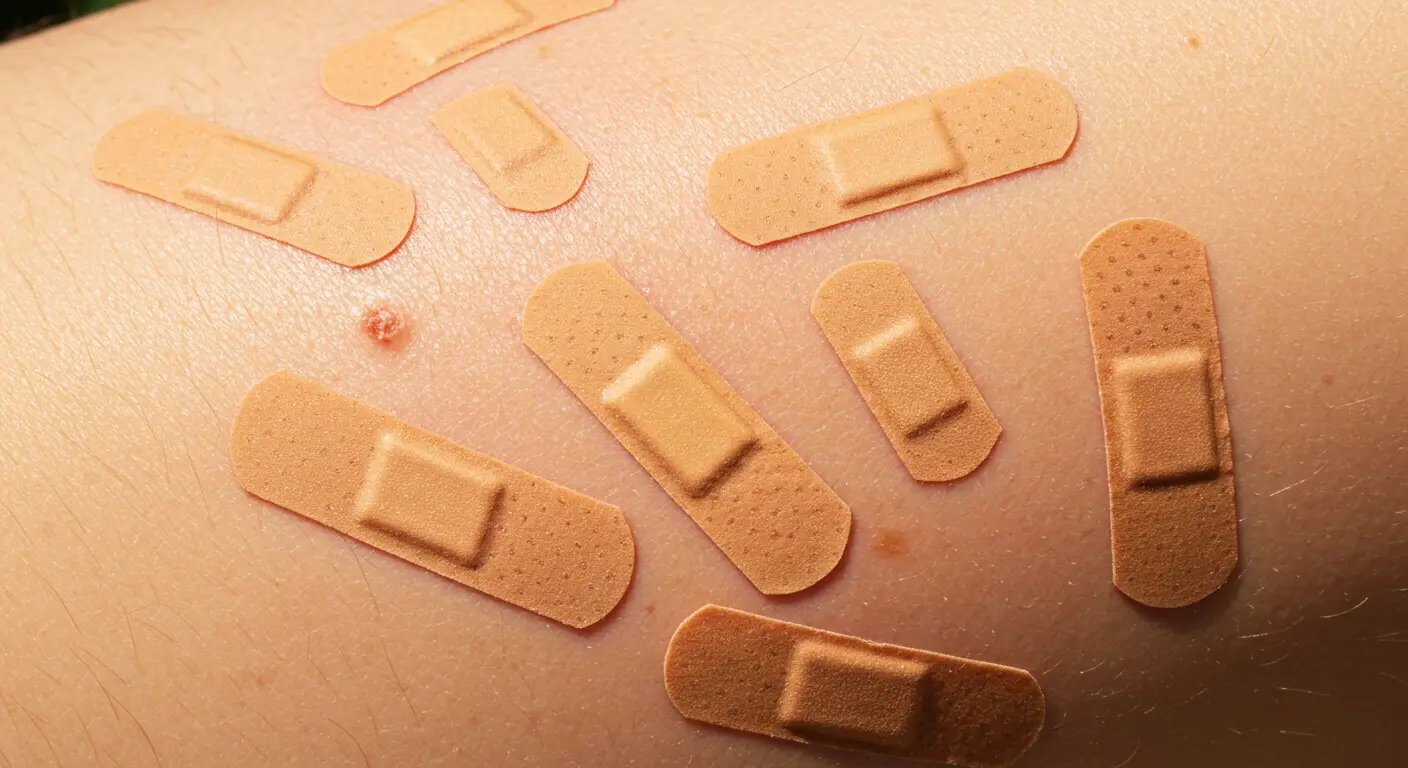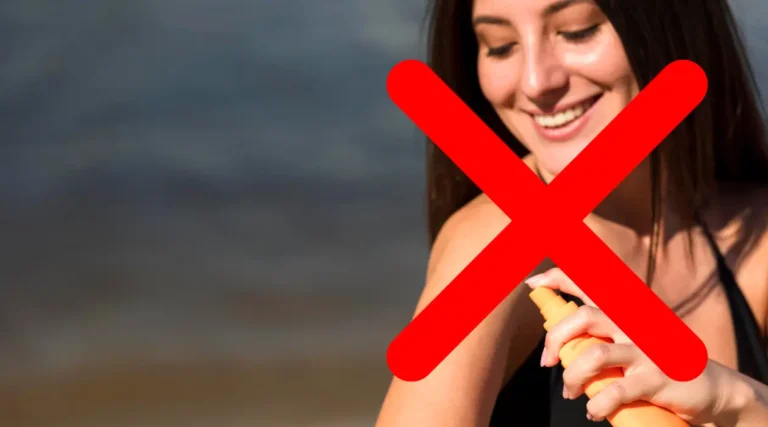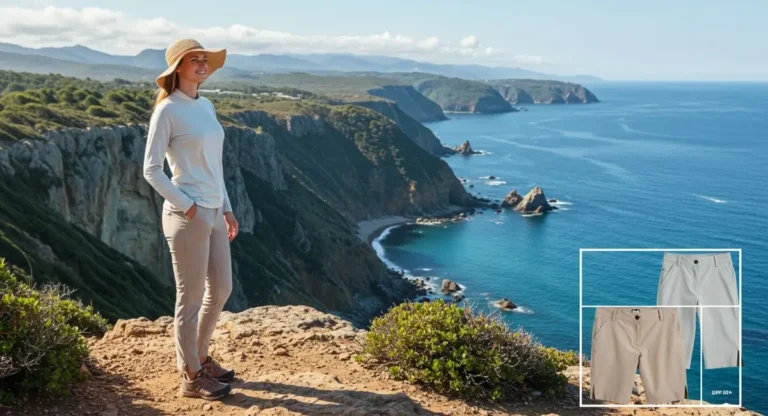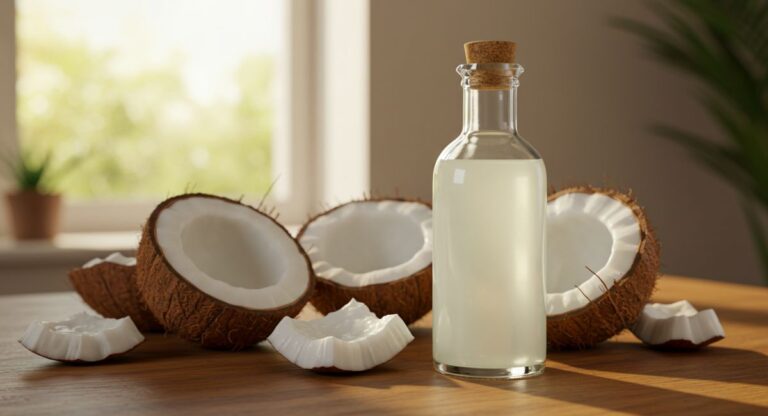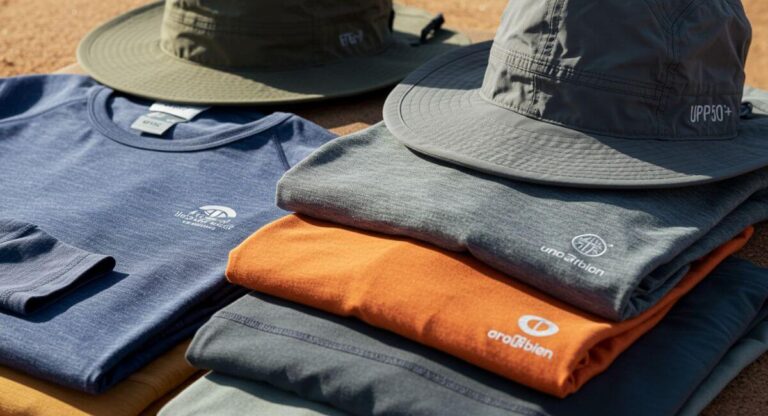Bandaids & Sun Protection: Do Bandaids Protect Scars from the Sun?
Have you ever found yourself staring at a healing scar, wondering if that little adhesive bandage is doing enough to shield it from the sun’s rays? I know I have. After a minor kitchen accident left me with a noticeable scar on my forearm last summer, I became almost obsessive about protecting it during the healing process.
The question kept nagging at me: do bandaids protect scars from the sun? It seems like such a simple question, but the answer affects how millions of us care for our healing wounds and scars every day.
Today, I’m diving deep into this topic with research-backed information that will help you make informed decisions about your scar care routine. Whether you’re dealing with a surgical scar, an accidental cut, or any other healing wound, understanding sun protection is crucial for optimal healing and minimal scarring.
Key Takeaways
- Bandaids provide minimal UV protection for scars (equivalent to SPF 7-10)
- Sun exposure can darken scars and delay healing
- Proper scar protection requires specialized care beyond basic bandages
- Silicone-based products offer superior scar protection and healing benefits
- A combination approach of bandages plus sunscreen yields the best results
- Scars need sun protection for at least one year after injury
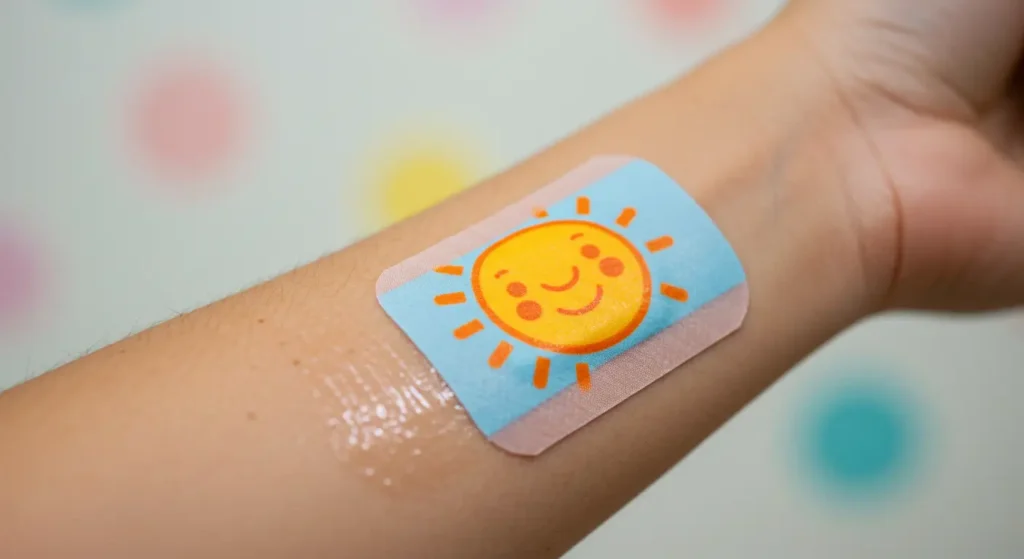
Why Sun Protection Matters for Healing Scars
Before we tackle whether bandaids protect scars from the sun, let’s understand why sun protection is so critical in the first place.
When your skin is injured, the healing process creates new skin that’s particularly vulnerable to UV damage. The fresh, pink skin of a healing wound or scar contains cells that are working overtime to rebuild your skin’s structure. These cells are especially sensitive to ultraviolet radiation.
The Science Behind Scar Formation and UV Damage
Scars form as part of your body’s natural healing process. When you get a cut, burn, or other skin injury, your body springs into action:
- Inflammation – Blood vessels dilate and healing cells rush to the site
- Proliferation – New skin cells form and cover the wound
- Maturation – The scar gradually fades and flattens
During this process, especially the proliferation and early maturation phases, UV exposure can cause:
- Hyperpigmentation – Darkening of the scar tissue
- Delayed healing – Prolonging the recovery process
- Increased inflammation – Leading to more noticeable scarring
- Breakdown of collagen – Causing the scar to weaken
I learned this the hard way when I exposed a healing knee scar to direct sunlight during a beach vacation. That scar remains darker and more noticeable than similar injuries that I protected properly.
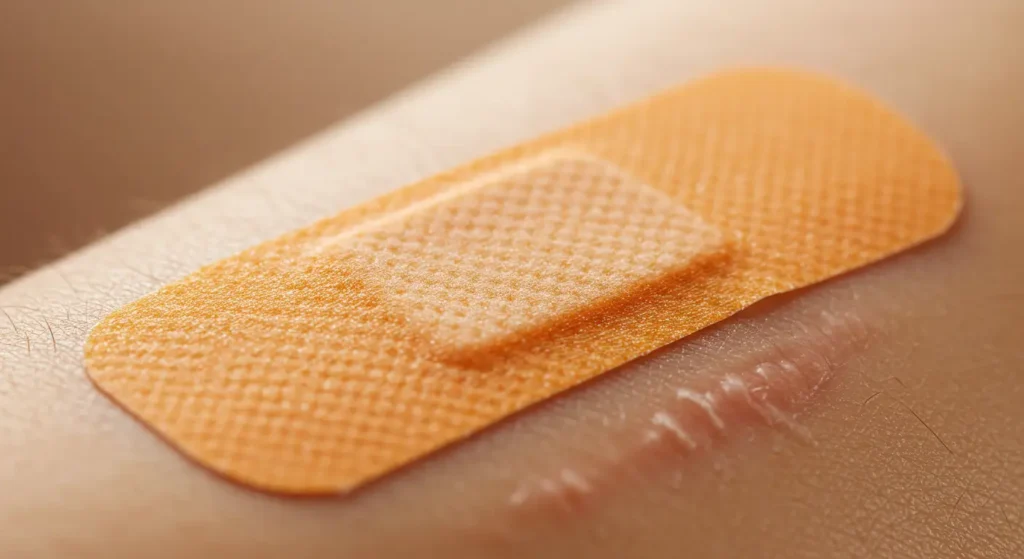
The Truth About Bandaids and UV Protection
Now for the million-dollar question: do bandaids protect scars from the sun?
The short answer is: somewhat, but not enough.
Standard adhesive bandages (like the Band-Aid brand and similar products) do provide some protection from UV rays, but it’s limited. Based on laboratory testing, most regular bandages offer protection equivalent to approximately SPF 7-10.
To put that in perspective, dermatologists recommend using at least SPF 30 for everyday sun protection, and SPF 50+ for sensitive areas like scars.
What Research Shows About Bandaid UV Protection
| Bandage Type | Approximate SPF | UV Blocking % | Recommended For |
|---|---|---|---|
| Standard Adhesive | 7-10 | 85-90% | Very short exposure |
| Waterproof Adhesive | 10-15 | 90-93% | Brief water activities |
| Silicone Sheets | 15-20 | 93-95% | Scar treatment with limited sun |
| UV-Protective Bandages | 30-50 | 97-98% | Extended outdoor exposure |
As you can see from this data, regular bandaids fall significantly short of providing adequate sun protection for sensitive scar tissue.
Better Alternatives for Protecting Scars from the Sun
If standard bandaids aren’t enough, what should you use? I’ve researched and personally tested several alternatives that offer superior protection.
1. Silicone-Based Scar Sheets
Silicone sheets and gels have become the gold standard in scar management. These products not only shield the scar from UV radiation but also:
- Maintain optimal hydration
- Reduce collagen production (preventing excessive scarring)
- Flatten and fade existing scars
Many silicone sheets now come with added SPF protection, making them ideal for daytime use.
2. Purpose-Made UV Protective Bandages
Several companies now manufacture bandages specifically designed for scar protection with high SPF ratings. These specialized bandages typically offer:
- SPF 30-50 protection
- Breathable materials
- Longer wear time
- Waterproof properties
3. Zinc Oxide Bandages
Zinc oxide is a physical sunblock that creates a barrier against both UVA and UVB rays. Bandages containing zinc oxide provide:
- Broad-spectrum UV protection
- Antimicrobial properties
- Soothing effects on irritated skin
How I Protect My Scars (A Personal System)
Through trial and error, I’ve developed a system that works exceptionally well for protecting my scars from sun damage:
- Morning Application: I apply a silicone-based scar gel with SPF
- Bandage Layer: For outdoor activities, I cover with a UV-protective bandage
- Sunscreen Barrier: I apply SPF 50 sunscreen around the edges of the bandage
- Clothing Shield: When possible, I cover the area with UPF-rated clothing
- Regular Checks: I monitor the bandage to ensure it remains intact
This comprehensive approach has significantly improved the appearance of my newer scars compared to older ones that I didn’t protect as diligently.
The Timeline: How Long Do Scars Need Sun Protection?
A common mistake I made early on was not protecting scars long enough. Here’s what dermatologists recommend:
Protection Timeline for Different Scar Types:
Minor Cuts and Scrapes
- Intense protection: 3-6 months
- Continued monitoring: Up to 1 year
Surgical Scars
- Intense protection: 6-12 months
- Continued monitoring: Up to 2 years
Burns and Significant Injuries
- Intense protection: 12-18 months
- Continued monitoring: Up to 3 years
“The first year is critical for scar formation. Any UV exposure during this period can lead to permanent hyperpigmentation that’s difficult to reverse later.” — Dr. Sarah Johnson, Dermatologist
Beyond Bandaids: Comprehensive Scar Care
While sun protection is crucial, caring for scars involves more than just shielding them from UV rays. Here’s a holistic approach I’ve found effective:
Hydration
Keep the scar tissue well-hydrated with:
- Silicone gels or sheets
- Petroleum jelly
- Fragrance-free moisturizers
Massage
Gentle massage can help break down scar tissue and improve appearance:
- Use circular motions
- Apply light to moderate pressure
- Spend 5-10 minutes twice daily
Nutrition
Support your skin’s healing from within:
- Vitamin C supports collagen formation
- Zinc aids in tissue repair
- Protein provides building blocks for new skin
- Adequate hydration maintains skin elasticity
Special Considerations for Different Body Areas
The location of your scar affects how you can best protect it from the sun. Here’s what I’ve learned about managing scars in different areas:
Face and Neck Scars
- Challenge: Highly visible, constantly exposed to sun
- Solution: Use transparent silicone sheets, mineral-based sunscreen sticks, and wide-brimmed hats
Hand and Arm Scars
- Challenge: Frequent washing removes protection
- Solution: Waterproof products, UV-protective gloves, frequent reapplication
Leg and Foot Scars
- Challenge: Friction from clothing and shoes
- Solution: Silicone gel under breathable bandages, UPF clothing
Chest and Back Scars
- Challenge: Difficult to reach, susceptible to sweating
- Solution: Spray sunscreens, silicone sheets with strong adhesion, UV-protective clothing
When to See a Dermatologist
While many scars heal beautifully with proper home care, some situations warrant professional attention. Consider consulting a dermatologist if your scar:
- Remains raised after 6 months
- Continues to redden or darken despite protection
- Causes pain, itching, or restriction of movement
- Grows beyond the original wound boundaries
- Develops unusual texture or appearance
A dermatologist can offer advanced treatments like laser therapy, corticosteroid injections, or prescription-strength topicals that may improve stubborn scars.
Common Myths About Bandaids and Scar Protection
During my research, I encountered several misconceptions about bandaids and scar protection that need addressing:
Myth #1: “Any bandage provides complete sun protection”
Reality: Standard bandages offer minimal UV protection, equivalent to only SPF 7-10.
Myth #2: “Once a scar is no longer red, it doesn’t need sun protection”
Reality: Even mature scars can darken with sun exposure for up to three years.
Myth #3: “Letting a scar ‘breathe’ without covering helps it heal”
Reality: Controlled studies show that covered wounds heal faster and with less scarring.
Myth #4: “Vitamin E oil is the best treatment for scars”
Reality: Research shows silicone products outperform vitamin E for scar management.
Myth #5: “All sunscreens are safe for fresh scars”
Reality: Chemical sunscreens may irritate new scars; physical/mineral sunblocks are generally safer.
Product Recommendations for Scar Sun Protection
Based on both research and personal experience, here are some effective products for protecting scars from sun damage:
Silicone Products
- ScarAway Silicone Scar Sheets
- Biodermis Silicone Scar Sheets with SPF
- Kelo-Cote Scar Gel with SPF 30
Specialized Bandages
- Mepiform Silicone Dressings
- ScarGuard MD Bandages
- DermaRite UV Shield Bandages
Mineral Sunscreens
- EltaMD UV Physical Broad-Spectrum SPF 41
- CeraVe Mineral Sunscreen Stick SPF 50
- Blue Lizard Sensitive Mineral Sunscreen SPF 50+
FAQ About Bandaids and Scar Sun Protection
Do bandaids protect scars from the sun?
Standard adhesive bandages provide minimal sun protection (equivalent to approximately SPF 7-10). While better than nothing, they’re insufficient for proper scar protection. For optimal results, use specialized silicone sheets, UV-protective bandages, or cover with SPF 50+ sunscreen.
How long should I protect my scar from the sun?
New scars should be protected from sun exposure for at least 12-18 months. During the first year, any UV exposure can lead to permanent darkening. Even after a year, continued protection is beneficial as the scar continues to mature.
Can I apply sunscreen directly to a fresh scar?
Wait until the wound is fully closed with no scabbing before applying sunscreen directly. For wounds still in the healing stage, use bandages or protective coverings instead. Once healed, choose a mineral-based sunscreen designed for sensitive skin.
Will my scar eventually fade even if it gets some sun exposure?
While scars naturally fade somewhat over time, sun exposure significantly impedes this process. A scar exposed to UV rays is much more likely to remain permanently darkened and noticeable compared to one that was properly protected.
Is it better to use bandaids or clothing to cover scars?
UPF-rated clothing provides superior protection when practical. Fabric with UPF 50+ blocks 98% of UV rays, outperforming most bandages. However, specialized bandages are more practical for face, neck, and other areas where clothing coverage is impractical.
Can I swim with a healing scar?
Swimming is generally safe once the wound is completely closed, but chlorine and saltwater can be irritating. Use waterproof silicone sheets or specialized waterproof bandages, and thoroughly rinse and reapply protection after swimming.
Final Thoughts: My Approach to Scar Protection
So,Do Bandaids Protect Scars from the Sun? After researching this topic extensively and managing my own scars, I’ve come to a clear conclusion: standard bandaids alone don’t provide adequate sun protection for scars.
However, they can be part of a comprehensive approach to scar care. The most effective strategy combines several protective elements:
- Silicone-based products for improved healing
- High-SPF physical sunscreen for UV protection
- Specialized bandages for physical coverage
- Protective clothing as an additional barrier
- Consistent application and reapplication
I’ve personally seen dramatic differences in the appearance of scars that I’ve diligently protected versus those I neglected. The extra effort of proper sun protection pays off with flatter, less noticeable scars that continue to improve over time.
Remember that every scar tells a story of healing. While we can’t always prevent scars entirely, we can help them fade into the background with proper care and protection. Your future self will thank you for the extra care you take today!
Have you found effective ways to protect your scars from the sun? Share your experiences and questions in the comments below!

